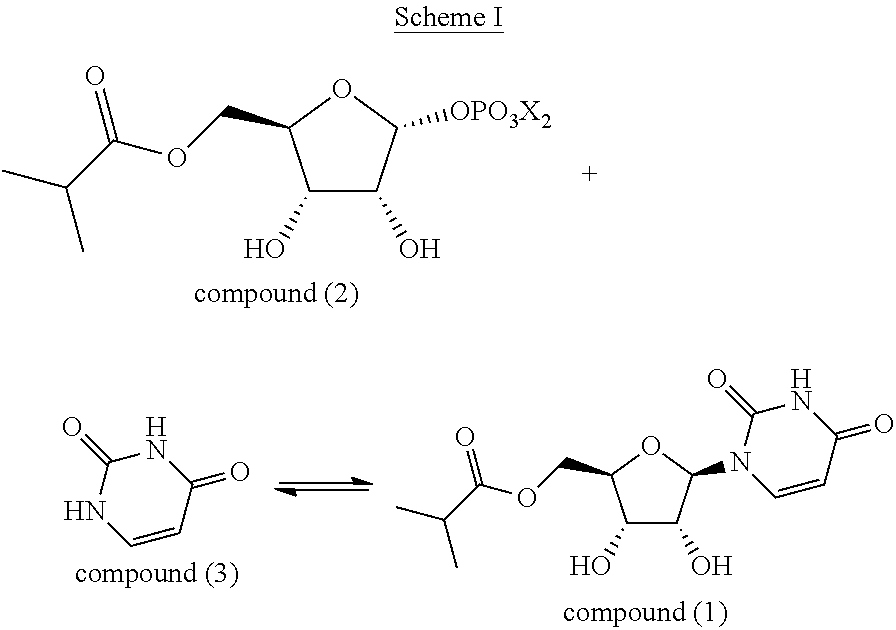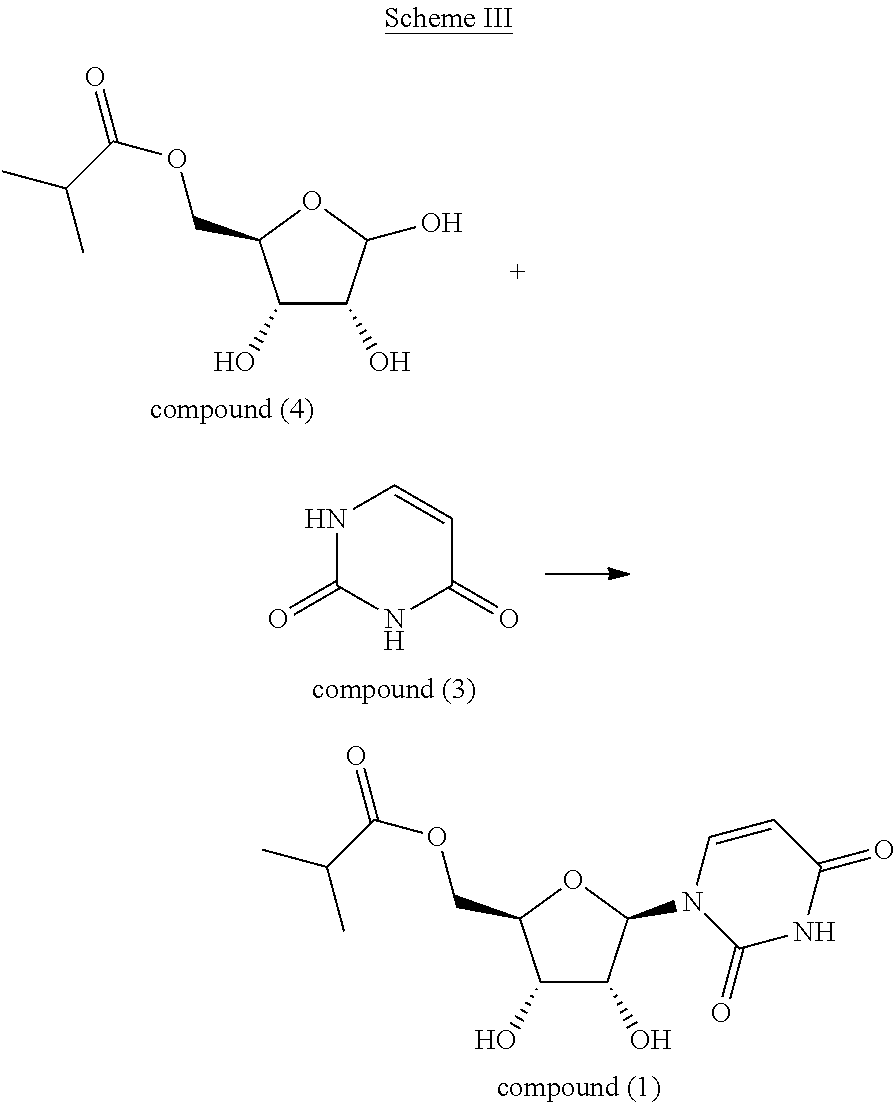Engineered uridine phosphorylase variant enzymes
a technology of phosphorylase and uridine, which is applied in the direction of enzymology, biochemistry apparatus and processes, transferases, etc., can solve the problems of inability to meet the requirements of industrial process conditions, the substrates and intermediates necessary to produce nucleoside analogs may not be available or suitable for industrial process conditions
- Summary
- Abstract
- Description
- Claims
- Application Information
AI Technical Summary
Benefits of technology
Problems solved by technology
Method used
Image
Examples
example 1
E. coli Expression Hosts Containing Recombinant Uridine Phosphorylase Genes
[0194]The initial uridine phosphorylase (UP) enzyme used to produce the variants of the present invention was obtained from the E. coli genome and cloned into the expression vector pCK110900 (See, FIG. 3 of US Pat. Appln. Publn. No. 2006 / 0195947), operatively linked to the lac promoter under control of the lad repressor. The expression vector also contains the P15a origin of replication and a chloramphenicol resistance gene. The resulting plasmids were transformed into E. coli W3110, using standard methods known in the art. The transformants were isolated by subjecting the cells to chloramphenicol selection, as known in the art (See e.g., U.S. Pat. No. 8,383,346 and WO2010 / 144103).
example 2
Preparation of HTP UP-Containing Wet Cell Pellets and Lysate
[0195]E. coli cells containing recombinant UP-encoding genes from monoclonal colonies were inoculated into 180 μl ALB containing 1% glucose and 30 μg / mL chloramphenicol in the wells of 96-well shallow-well microtiter plates. The plates were sealed with O2-permeable seals, and cultures were grown overnight at 30° C., 200 rpm, and 85% humidity. Then, 10 μl of each of the cell cultures were transferred into the wells of 96-well deep-well plates containing 390 mL TB and 30 μg / mL CAM. The deep-well plates were sealed with O2-permeable seals and incubated at 30° C., 250 rpm, and 85% humidity until OD600 0.6-0.8 was reached. The cell cultures were then induced by IPTG to a final concentration of 1 mM and incubated overnight at 30° C. The cells were then pelleted using centrifugation at 4,000 rpm for 10 min. The supernatants were discarded and the pellets frozen at −80° C. prior to lysis.
example 3
Preparation of Lyophilized Lysates from Shake Flask (SF) Cultures
[0197]Selected HTP cultures grown as described above were plated onto LB agar plates with 1% glucose and 30 μg / ml CAM, and grown overnight at 37° C. A single colony from each culture was transferred to 6 ml of LB with 1% glucose and 30 μg / ml CAM. The cultures were grown for 18 hr at 30° C., 250 rpm, and subcultured approximately 1:50 into 250 ml of TB containing 30 μg / ml CAM, to a final OD600 of 0.05. The cultures were grown for approximately 195 minutes at 30° C., 250 rpm, to an OD600 between 0.6-0.8 and induced with 1 mM IPTG. The cultures were then grown for 20 hr at 30° C., 250 rpm. The cultures were centrifuged 4,000 rpm for 20 min. The supernatant was discarded, and the pellets were resuspended in 30 ml of 20 mM triethanolamine, pH 7.5., and lysed using a Microfluidizer® processor system (Microfluidics) at 18,000 psi. The lysates were pelleted (10,000 rpm for 60 min), and the supernatants were frozen and lyophili...
PUM
| Property | Measurement | Unit |
|---|---|---|
| pKa | aaaaa | aaaaa |
| temperature Tm | aaaaa | aaaaa |
| temperatures | aaaaa | aaaaa |
Abstract
Description
Claims
Application Information
 Login to View More
Login to View More - R&D
- Intellectual Property
- Life Sciences
- Materials
- Tech Scout
- Unparalleled Data Quality
- Higher Quality Content
- 60% Fewer Hallucinations
Browse by: Latest US Patents, China's latest patents, Technical Efficacy Thesaurus, Application Domain, Technology Topic, Popular Technical Reports.
© 2025 PatSnap. All rights reserved.Legal|Privacy policy|Modern Slavery Act Transparency Statement|Sitemap|About US| Contact US: help@patsnap.com



